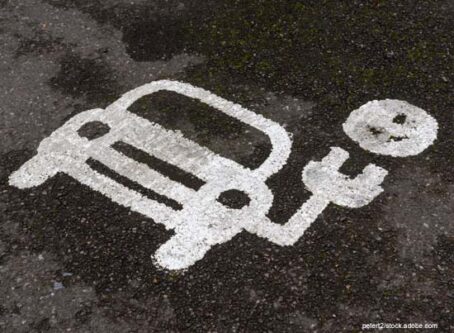In-vehicle technology can be as distracting as cellphones, study finds
Cellphones have been the scapegoat for distracted driving over the past decade, but a new study suggests another electronic that could be a major problem: in-vehicle technology.
Research conducted by the AAA Foundation for Traffic Safety studied the unintended consequences of the technology that comes standard in 30 model year 2017 passenger vehicles. “Visual and Cognitive Demands of Using In-Vehicle Infotainment Systems” found that built-in devices that allow texting, navigation and audio play divert a driver’s attention away from the road significantly.
“2017 model-year automobiles provide a variety of features and functions that allow motorists to perform a plethora of secondary tasks unrelated to the primary task of driving,” researchers concluded.
Audio, calling, texting and navigation
Four task types were studied: audio entertainment, calling/dialing, text messaging and navigation. Researchers looked a various factors for each of the task types, including cognitive demand, visual demand, interaction time and overall demand.
To no surprise, text messaging was associated with a significantly higher level of overall demand than calling or audio entertainment. Text messaging options were found in 22 of 30 vehicles tested.
However, destination entry for navigation was found to be the most demanding of the four task types, a task type found in 12 of 30 vehicles.
Audio entertainment involved the shortest interaction, followed by calling and dialing at a distant second. Texting and navigation ate up the most interaction time at an average of 30 seconds and 40 seconds, respectively. Task interaction time was defined as the time from the moment participants first initiated an action to the time when that action had terminated and the participant said “done.”
Location of in-vehicle technology matters
Researchers also looked into exactly where the in-vehicle infotainment systems were situated inside the vehicle. Center stack, center console and auditory vocal were the three options available in the 30 vehicles tested.
Center stacks are in the center of the dash to the right of the driver and often include a touch-screen interface to support visual/manual interactions. A voice-based interaction is initiated by the press of a physical button on the steering wheel or center stack. The center console is between the driver and passenger front seats. The interactions are made through a rotary dial that allows drivers to scroll through menu items presented on the center stack visual display
Surprisingly, interactions using a center stack device were significantly less demanding than auditory vocal interactions. In fact, auditory vocal interactions took significantly longer than any other interaction. Center console interactions were found to be the most demanding.
Results discovered that using the touch screen on the center stack was the demanding way to send a text message. Using voice commands, on the other hand, ended up being the most demanding interaction mode for texting. This may be due to the inefficiency of voice-to-text technology.
Some vehicles are worse than others
Seven of the 30 vehicles received an overall rating significantly below the base level for high demand, which suggests only a moderate level of overall demand. Eleven of the 30 vehicles received a score that did not differ from the high demand baseline, i.e. high overall demand score. However, 12 of the 30 vehicles scored significantly above the high demand baseline, meaning those vehicles received a very high overall demand score.
Of the 12 vehicles with very high overall demand, 83 percent offered destination entry for navigation while the vehicle was in motion. Three vehicles – Audi Q7 3.0T Premium Plus, Honda Ridgeline RTL-E and Volvo XC60 T5 Inscription – scored extremely high demand, with the Honda Ridgeline far surpassing the other two.
One example of distracting in-vehicle technology comes with the Tesla Model S 75. The Model S allows internet use on a 17-inch LCD touch screen, enabling drivers to perform a variety of tasks no related to driving, such as composing Facebook posts. This feature was not including in the scoring, which would likely have increased the Model S score. In 2016, a man driving a Tesla Model S was killed when his autonomous car struck a tractor-trailer.
Perception vs. reality
Study after study reveals that everyone believes their driving skills are superior to most. This display of overconfidence also applies to people’s perception of their time spent interacting with in-vehicle technology.
Self-reported ratings of the demand for the navigation task were the same as the audio entertainment task. However, the data revealed that navigating was far more demanding than audio entertainment, suggesting people perceived to demand less attention to navigation than they actually did.
The deviation between perceived demand and the actual demand highlights the issue of motorists self-regulating their behavior. Drivers may not feel compelled to correct distracting behavior if they do not feel there is much distraction occurring.
The National Highway Traffic Safety Administration issued voluntary guidelines in 2013 regarding visual/manual tasks. NHTSA suggested that tasks should not require more than 12 second of “total eyes off road time” to complete. According to the study, the 12-second rule is based on the societally acceptable risk associated with tuning an analog in-car radio
“Our objective assessment suggests that many of these (in-vehicle infotainment system) features are too distracting to be enabled while the vehicle is in motion,” researchers said. “This is troublesome because motorists may assume that features that are enabled when they are driving are safe and easy to use. Greater consideration should be given to what interactions should be available to the driver when the vehicle is in motion rather than to what (in-vehicle infotainment system) features and functions could be available to motorists.”









